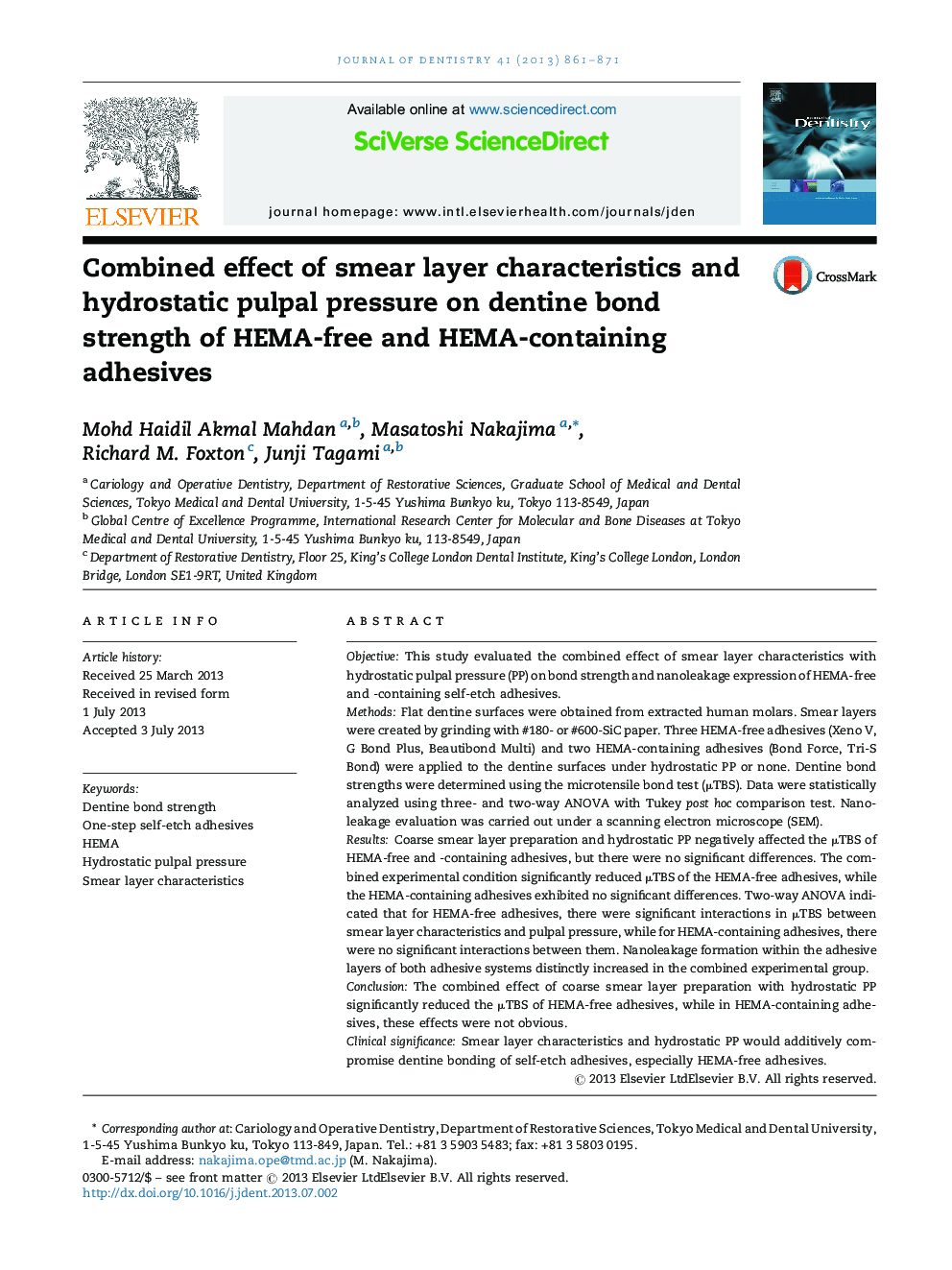| Article ID | Journal | Published Year | Pages | File Type |
|---|---|---|---|---|
| 3146265 | Journal of Dentistry | 2013 | 11 Pages |
ObjectiveThis study evaluated the combined effect of smear layer characteristics with hydrostatic pulpal pressure (PP) on bond strength and nanoleakage expression of HEMA-free and -containing self-etch adhesives.MethodsFlat dentine surfaces were obtained from extracted human molars. Smear layers were created by grinding with #180- or #600-SiC paper. Three HEMA-free adhesives (Xeno V, G Bond Plus, Beautibond Multi) and two HEMA-containing adhesives (Bond Force, Tri-S Bond) were applied to the dentine surfaces under hydrostatic PP or none. Dentine bond strengths were determined using the microtensile bond test (μTBS). Data were statistically analyzed using three- and two-way ANOVA with Tukey post hoc comparison test. Nanoleakage evaluation was carried out under a scanning electron microscope (SEM).ResultsCoarse smear layer preparation and hydrostatic PP negatively affected the μTBS of HEMA-free and -containing adhesives, but there were no significant differences. The combined experimental condition significantly reduced μTBS of the HEMA-free adhesives, while the HEMA-containing adhesives exhibited no significant differences. Two-way ANOVA indicated that for HEMA-free adhesives, there were significant interactions in μTBS between smear layer characteristics and pulpal pressure, while for HEMA-containing adhesives, there were no significant interactions between them. Nanoleakage formation within the adhesive layers of both adhesive systems distinctly increased in the combined experimental group.ConclusionThe combined effect of coarse smear layer preparation with hydrostatic PP significantly reduced the μTBS of HEMA-free adhesives, while in HEMA-containing adhesives, these effects were not obvious.Clinical significanceSmear layer characteristics and hydrostatic PP would additively compromise dentine bonding of self-etch adhesives, especially HEMA-free adhesives.
